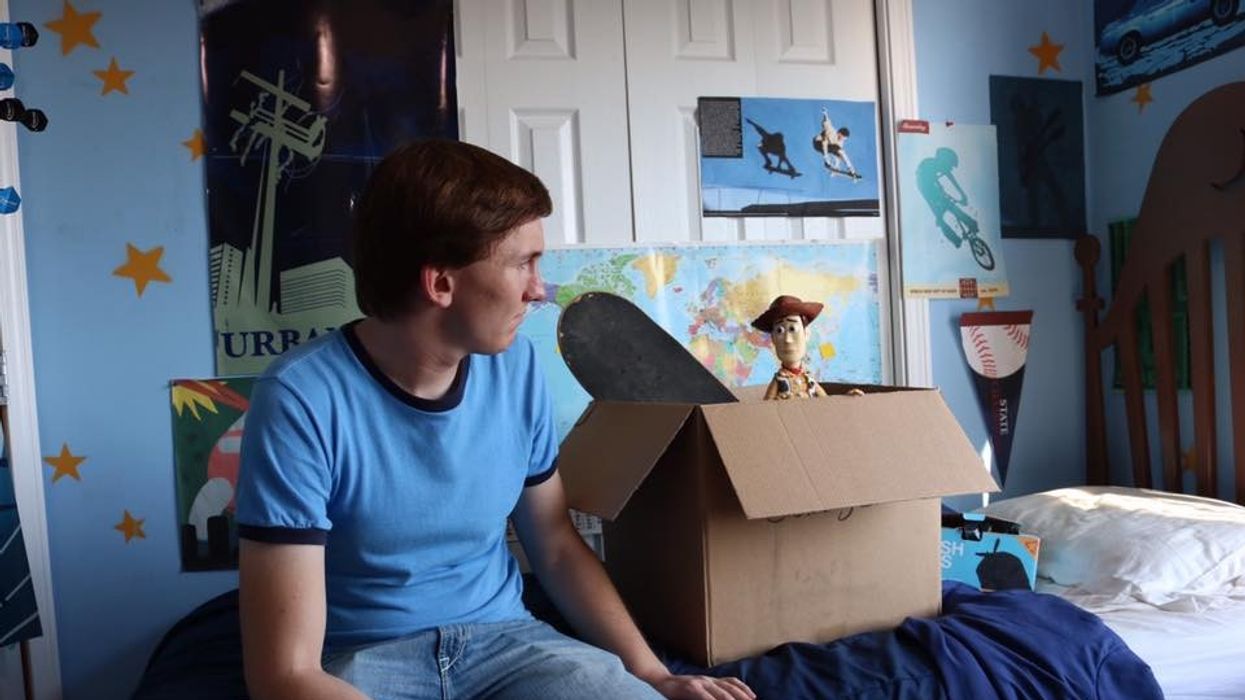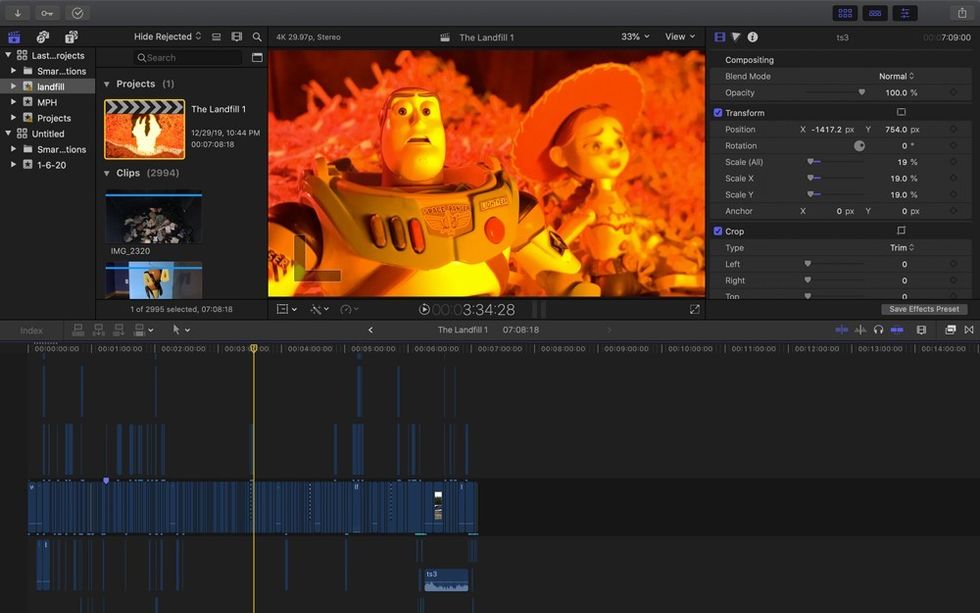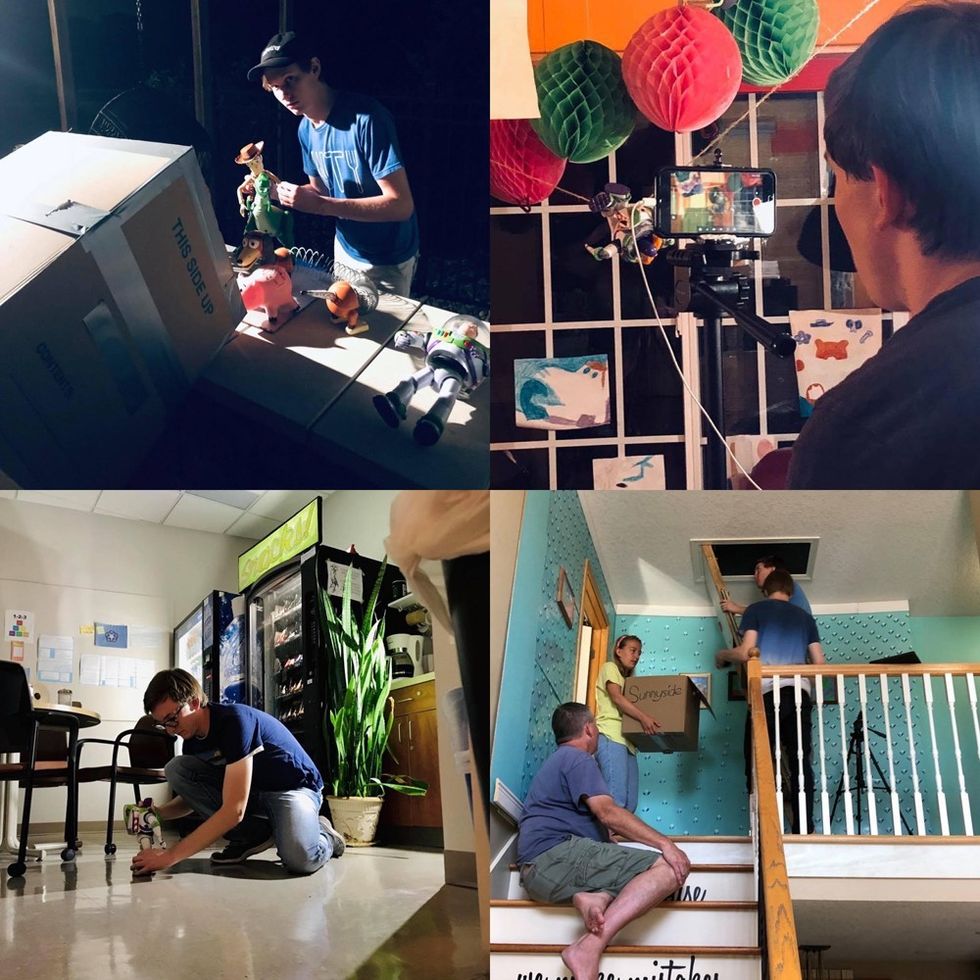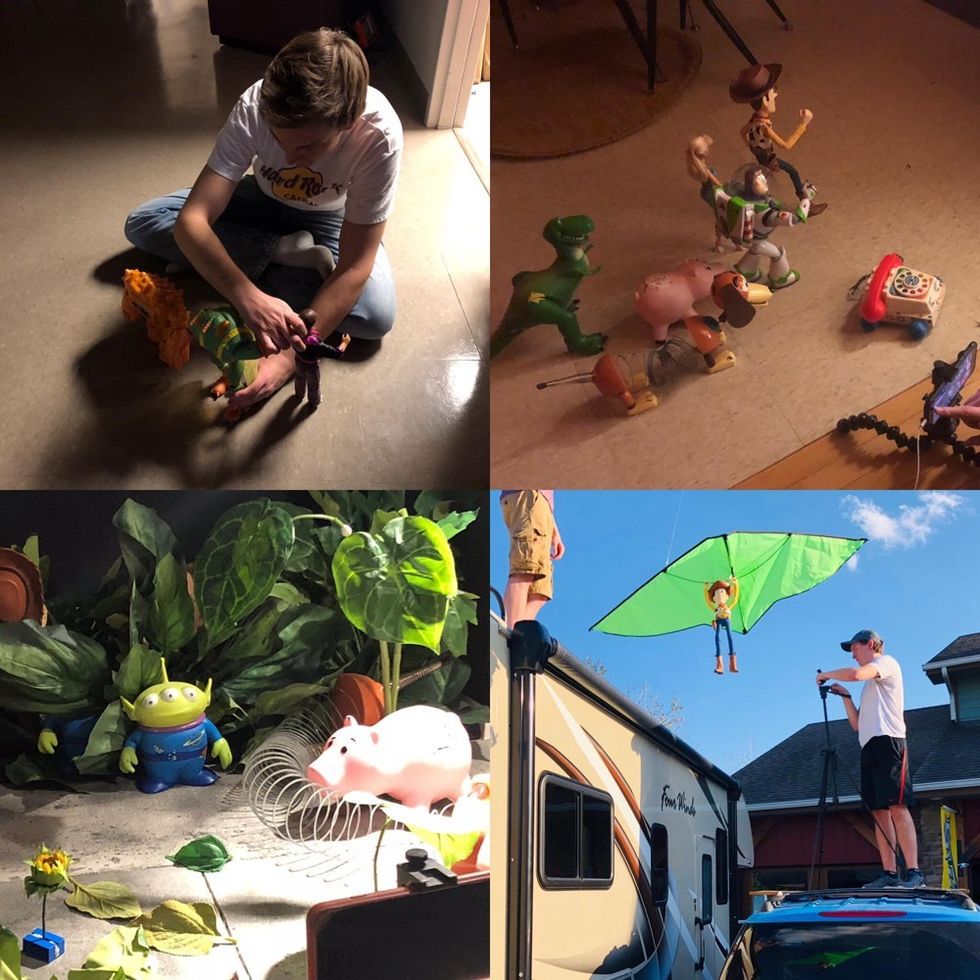How Two Brothers Created a Shot-for-Shot Remake of 'Toy Story 3'
Time and patience pay off for this 8-year Pixar passion project.

Brothers Mason and Morgan McGrew grew up as fans of Pixar films. So much so they spent nearly a decade recreating a version of Toy Story 3. The feature film, released on YouTube, combined stop motion–a tedious technique that involves physically changing how the objects appear in a single frame and photographing them–with other techniques to detail a near shot-for-shot remake.
At times, it took them up to eight hours to film a few seconds of footage. The end result is quite impressive, illustrating what dedication can do. They shared the intricacies of the project with No Film School below.
No Film School: What inspired you to start the project?
Morgan McGrew: I think it came down to us wanting to explore our growing filmmaking skills with the characters we love so much. The animated film allowed us to reference familiar territory and make something new with it.
Mason McGrew: To add to that, when we first started the project, we didn’t know what we were setting out to do. We were making short clips of the movie, and then as time went on, we decided to make it the full film as we became more in tune with our creative voices and talent.
NFS: Was stop animation always the direction?
Morgan: When we were younger we made stop motion animations but we didn’t use that technique at first. At the beginning, a lot of it was done with strings and we would move the characters around like puppets. But as we did other shots, it almost required it to be stop motion because of the wide angle of view. We realized with stop motion there was more we could do with characters that made it feel like another world over something like puppeteering.
Mason: We also discovered stop motion added more value to the project. It took it from two kids working on a Saturday afternoon to two kids trying to make something look professional.
NFS: Did you find that any camera worked?
Mason: The early years we used on a cheap digital camera. When we did any stop animation with it, we would record video the entire time, then move all the characters in the scene and then take out the individual shots to build scenes. As technology improved, it got easier for us to do the stop motion. We eventually switched to iPhones.
Morgan: Some scenes we would use armature wires or our own hands and erase them later. But we would usually try to shoot scenes without any additional tools to avoid the extra work in post. Consistency was another thing we realized was going to be tough. Luckily, the iPhone footage stays fairly similar in style.
NFS: What was the workflow to capture scenes?
Morgan: To create scenes, we would have the film on our computers and calculate the math to find out how many seconds each shot was. Then we would estimate the number of frames needed for the stop motion if stop motion was to be used for that shot. For many of the shots we would cue up the animated movie and arrow over frame by frame to make sure our version matched.
NFS: You added life to the characters with different mouth movements. Was it difficult working with some of the characters?
Morgan: In some ways. Since the characters we used were real, not all of them had faces with movable mouths. In order to compensate for the lack of movement we made their bodies more expressive. We also added clay mouths for characters like Jessie because the doll had a really happy face and there are moments she’s supposed to be mad. We ended up using clay to match the style of her face to make her look angry or sad. Other characters, like the Potato Heads, had moveable eyelids and pieces that allowed us to depict certain emotions.
NFS: You shared videos of how you recreated Andy’s room and tracked down all the characters, but how did you approach recreating the other locations?
Mason: Whenever we could we tried to find a real location that matched the animated version. You see that with the daycare location. Others, like the scene where Baby throws Lots-O into the dumpster and Woody and everyone falls in, were created digitally.
NFS: So it’s not real? (Gasp).
Mason: (laughs) No. The entire location doesn’t exist but it’s digitally crafted out of things that do exist. We wanted to make sure what you see looks real. We would take pictures of real elements and then composite those together making sure the lighting looked similar to the animated version. Those sets alone took weeks to build.
NFS: At least tell us the garbage truck is real, right?
Mason: It is. Our friend has a relative that owns a garbage hauling service so we got in contact with him and we filmed all the day and night exterior shots in one day. Other scenes required us to build a scale model of the truck.
NFS: How did you shoot the scenes that required actors?
Morgan: We typed out the dialog for scenes between Andy, Andy’s mom, and Molly. Then we simply framed the shots based on the animated movie and shot those over two days using the script and the movie on our laptops.

NFS: What was the approach for post?
Mason: We used Final Cut Pro. It allowed us to do all the things we wanted to do but we sometimes needed to find unique ways to pull it off in the program.
NFS: What did you learn about stop animation through the process?
Mason: The more frames you create the better because you can always trim out the ones you don’t need. We also found color was important so we spent a lot of time redoing shots to make sure it was in the style of Toy Story universe. It added a lot of life to what we were doing.
Morgan: For color, we couldn’t always match what Pixar created, so we would color correct later. There’s also a feeling that you can see in the physical camera. When you know it looks right cause you can feel it. We didn’t always try to be accurate to what it was in the animated movie but rather does it feel right to what it should be in what we were creating.
NFS: Any advice for other aspiring filmmakers?
Mason: A lot of this project came down to discipline and organization. There were so many pieces to manage and making sure all the elements were perfect. We wanted to make this as good as something Pixar would produce and never fail the characters. We wanted the characters to be as lively as possible and that takes a lot of patience.
Morgan: Yes. Always be patient with any of the shots you’re doing. When I say that I mean not rushing the performance. Giving the character a little extra head bob can go a long way. Always be kind and passionate about the work you are doing. Don’t rush anything as it’s never going to be good for a project. It takes time to make anything of quality, so stay true to yourself and don’t lie to yourself and say something is as good as it can be. Always challenge yourself to make it better.













